Despite its name, the Jakarta-Bandung High Speed Railway doesn’t actually reach Bandung city proper. Passengers travelling on the HSR (or “WHOOSH” as it’s branded) have to disembark at Padalarang HSR station and connect onto a dedicated feeder train service operated by PT Kereta Api Indonesia (PT KAI), which runs on the existing mainline from Padalarang to Bandung station with a halfway stop at Cimahi station.
I got to try the Jakarta-Bandung HSR in its 2nd week of commercial operations, and caught the Feeder train from Padalarang to Bandung station. Here’s how it went for me.
Buying tickets for the Feeder train
You don’t have to buy a separate ticket for the Feeder train, and there are no extra charges either as each WHOOSH ticket already includes a single journey on the Feeder train.
HSR Feeder train schedules & route information
The Feeder train departures and arrivals are synchronised with those of the WHOOSH services. For example, the 10:52am WHOOSH arrival at Padalarang connects to the 11:00am Feeder train departure, whereas the 9:02am WHOOSH departure from Padalarang to Halim is served by the 8:46am Feeder train arrival at Padalarang. Passengers get between 7 to 8 minutes to connect from the WHOOSH to the Feeder in the direction of Bandung, but for some reason passengers connecting from the Feeder to the WHOOSH in the direction of Halim get a leisurely 15 to 16 minutes instead.
At the time I booked my tickets in October 2023, the WHOOSH ticketing website initially did not feature any information about the Feeder train. Instead, the schedules and route information were posted only on the official WHOOSH Instagram page. This has now been fixed, and the WHOOSH ticketing website now includes a page dedicated to the schedules for the WHOOSH and the Feeder train.
Connecting from WHOOSH at Padalarang
Padalarang HSR station is built on a higher elevation next to the existing mainline Padalarang station. The Feeder train’s platform is located right below the HSR platform for easy transfers, albeit with an 8-minute window for WHOOSH passengers to connect to the Feeder.
I did not see any fixed signages directing connecting passengers to the Feeder train platform, and the whole system seemed to boil down to staff on hand verbally directing passengers to the correct platform. In contrast, Bandung station had clear signage directing passengers to the platform for Feeder services to Padalarang. Is it really that hard to install proper signage in a brand new, specially built station?
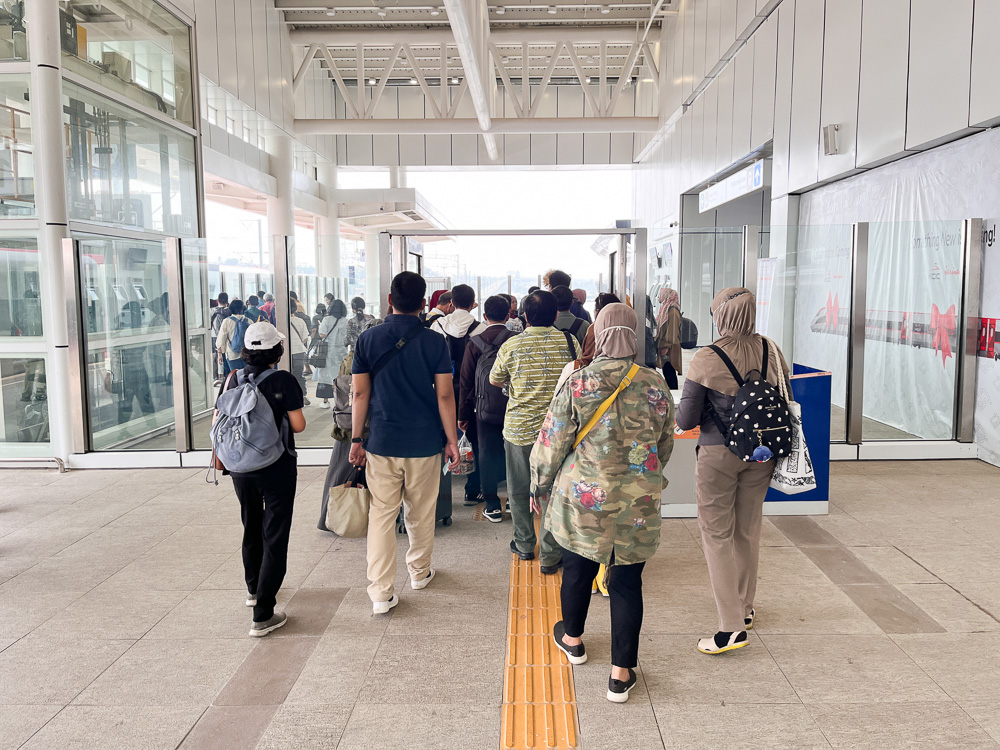
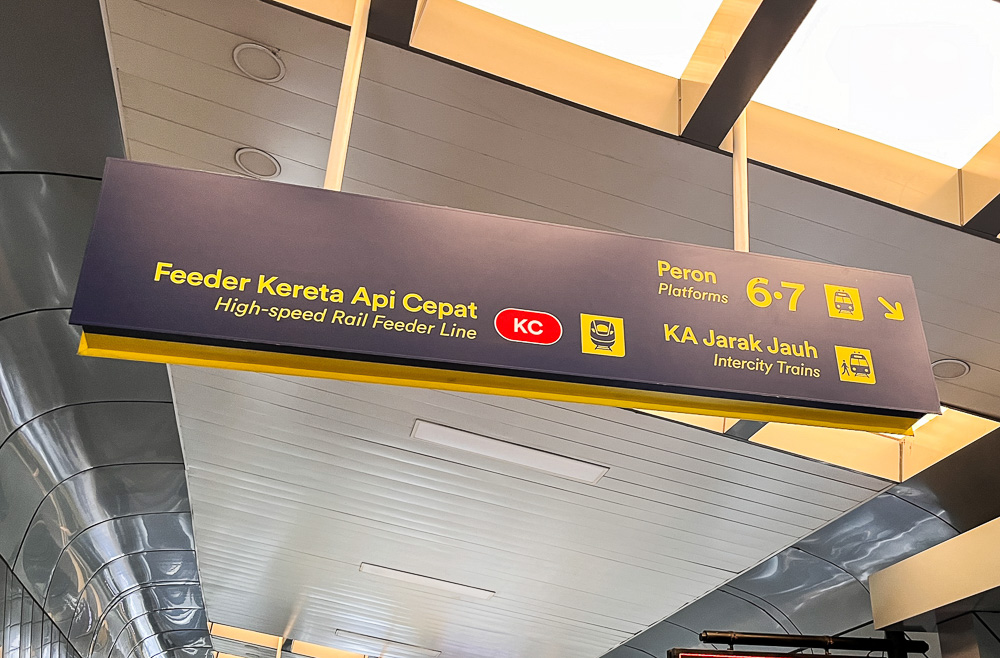
I also noted a quirk of the platform’s design at Padalarang, where there are only 2 sets of escalators down on the opposite ends of the platform. This resulted in 2 groups of connecting passengers caught in their own bottlenecks on the way down – I’m curious to see how this arrangement holds up if and when passenger numbers increase.
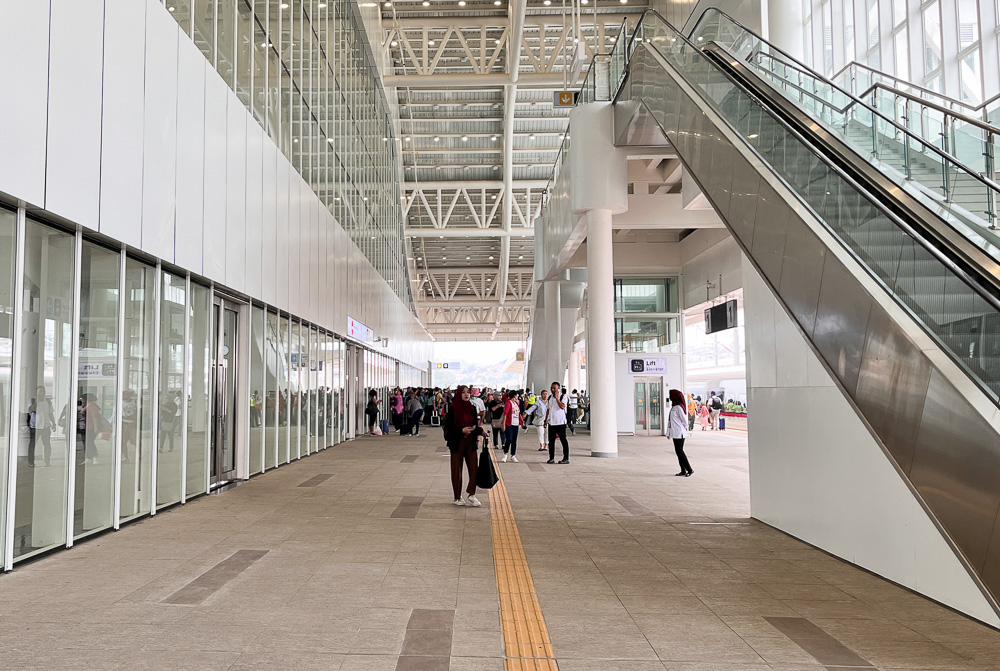
Onboard Cabin & Amenities
The Feeder service is operated by PT Kereta Api Indonesia (PT KAI) using diesel multiple units (DMU) made by local manufacturer PT INKA. These same trains are also used for the airport rail links in Padang, Surakarta, and Yogyakarta, and are painted in the same bright green and black livery.
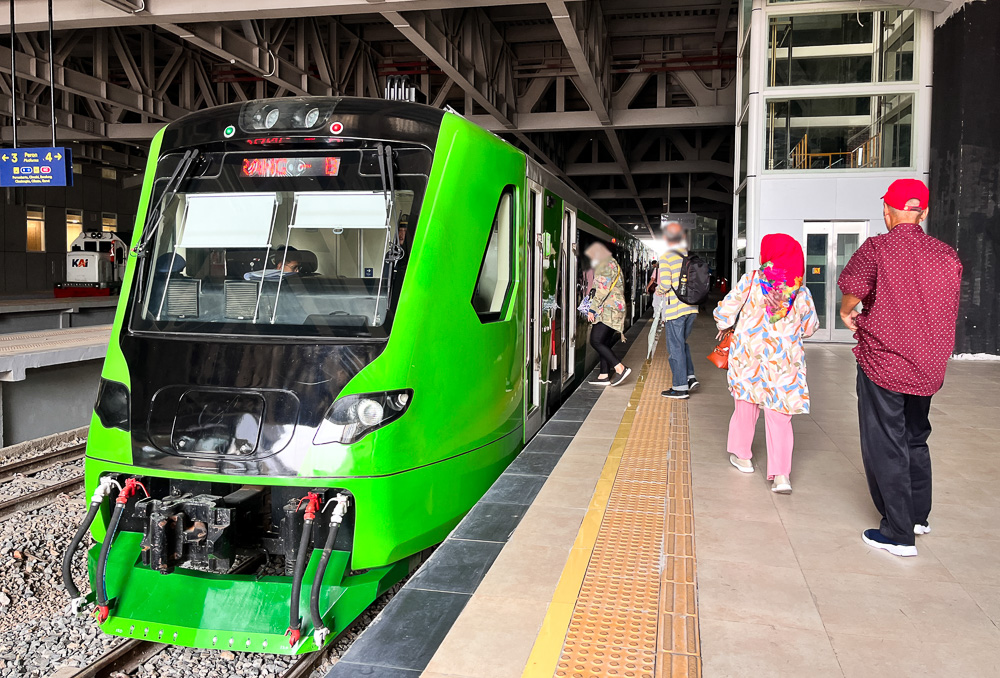
Seating on the Feeder DMU is composed entirely of facing bays of seats in 2-2 configuration, meaning you will inevitably end up sitting facing a stranger. There wasn’t enough seats for all of us though, and a lot of transferring passengers ended up standing and holding on to the grab handles. This was obviously a drastic change of scenery from the fancier HSR of just a few minutes ago, and one that makes me skeptical of the long term viability of the Feeder service in its current form.
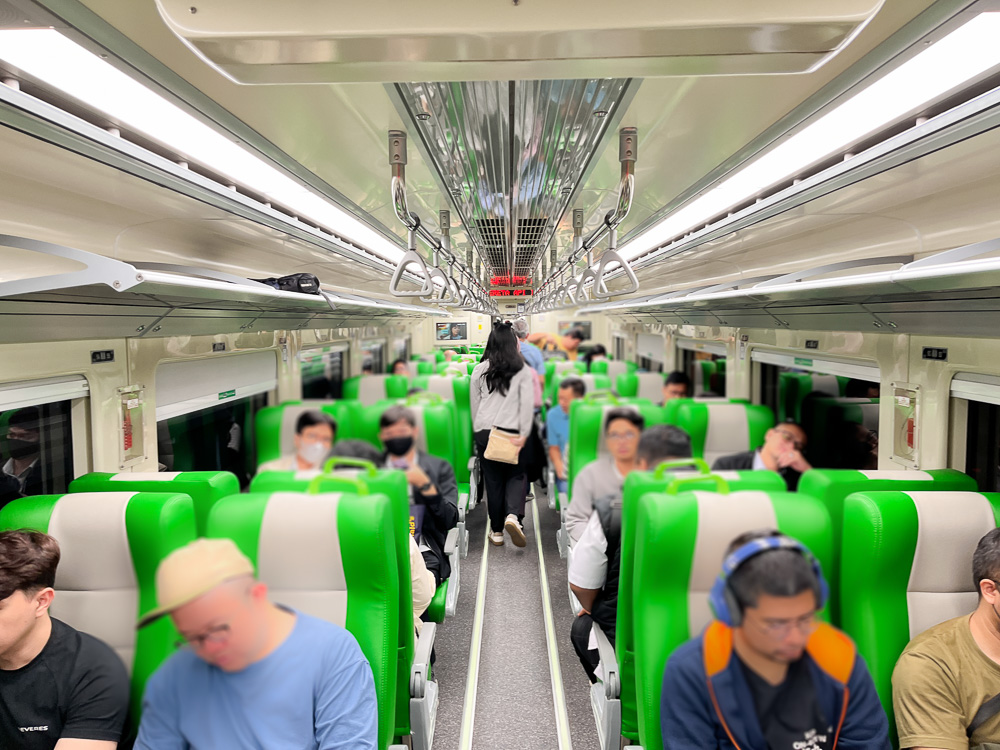
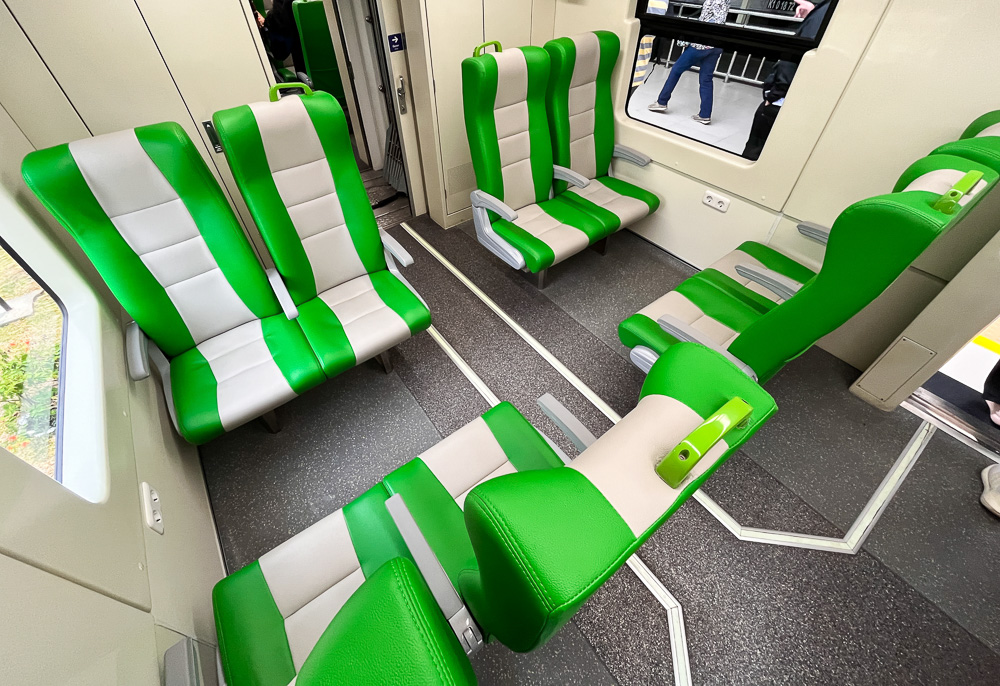
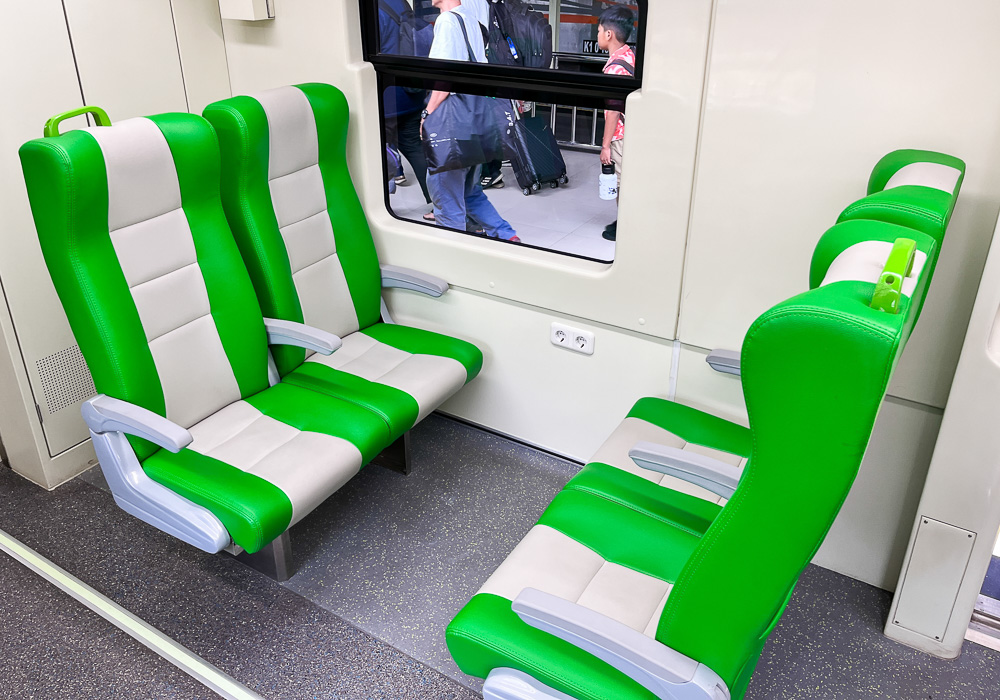
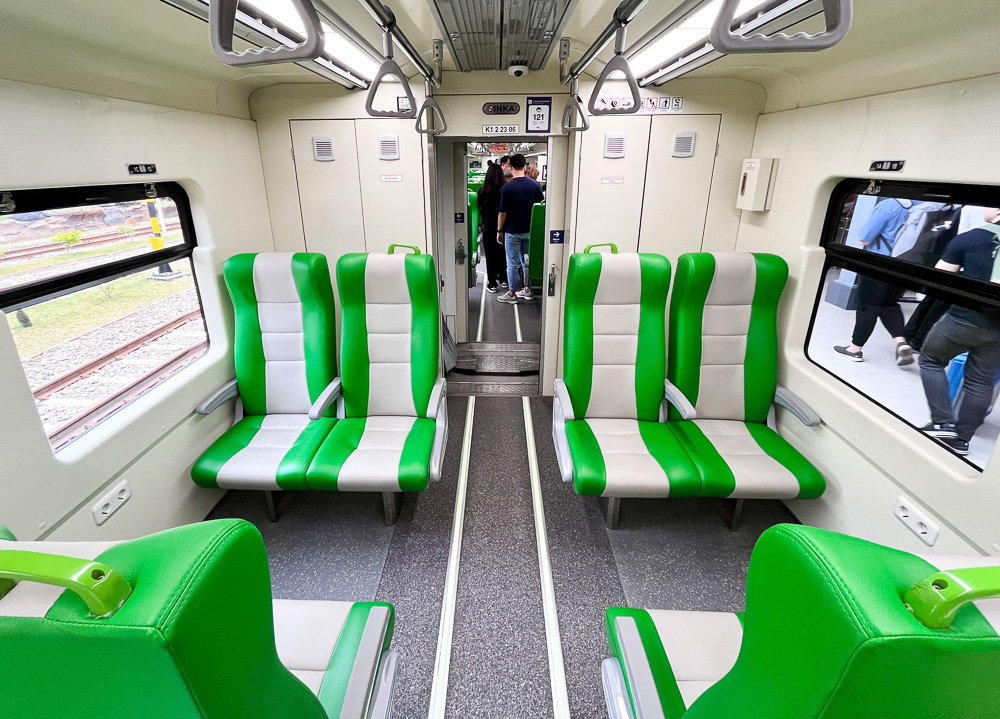
Needless to say, travelling with luggage on the Feeder train will be a difficult thing to do.
Arrival at Bandung station
The not-so-smooth ride from Padalarang to Bandung takes 20 minutes, and gives views of the urban areas around the legacy mainline. These are views that you don’t get with the HSR as it generally runs on an elevated route for most of its alignment.
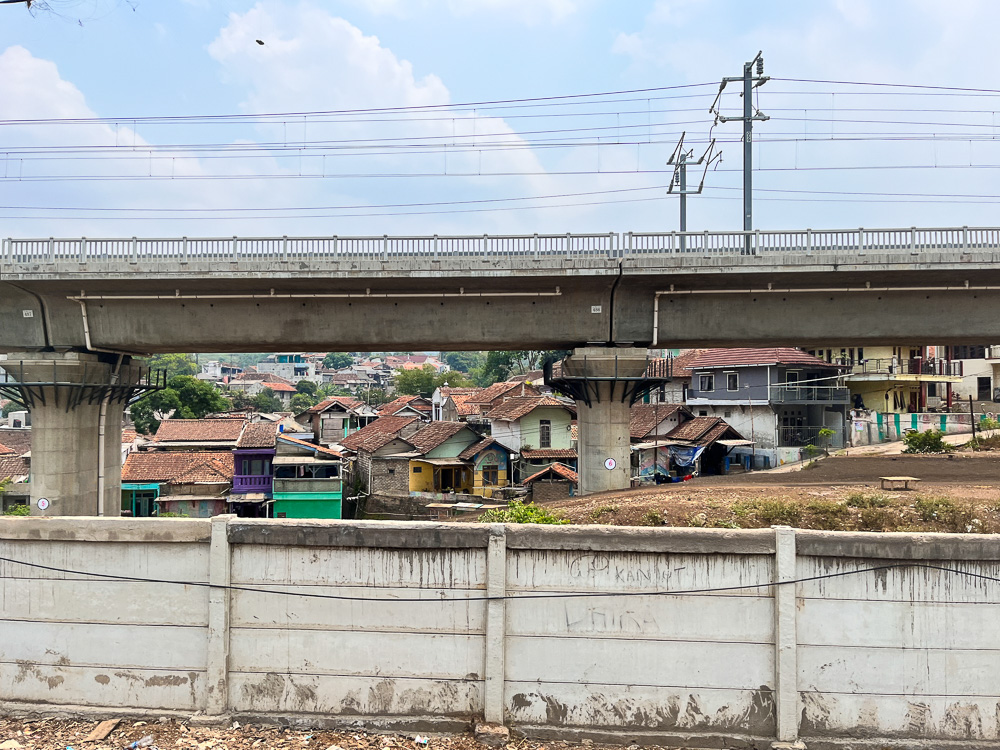
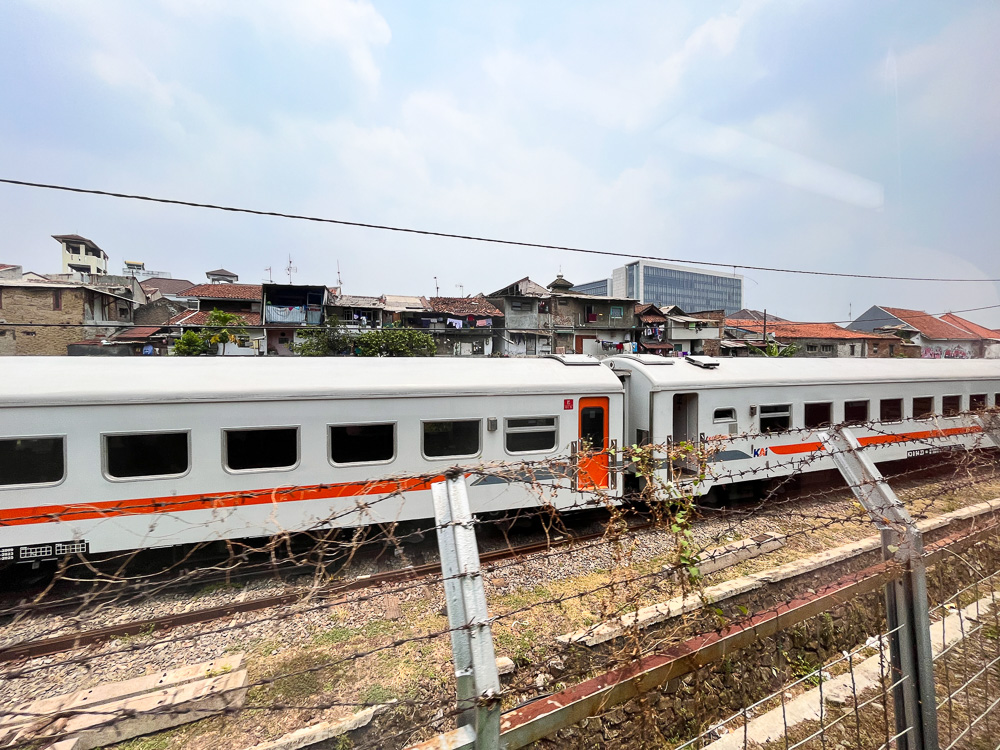
Suffice to say, the view and the ride quality has the effect of bringing the WHOOSH passengers back down to Earth.
My Feeder train pulled into Bandung station 2 minutes behind schedule, which is honestly negligible given that we just sped from Jakarta to Padalarang in record speed on the high speed line. In total, I spent approximately 50 minutes travelling from Jakarta to Bandung onboard the WHOOSH and the Feeder train service. In contrast, the direct Argo Parahyangan service between the two cities takes closer to 3 hours in one direction.
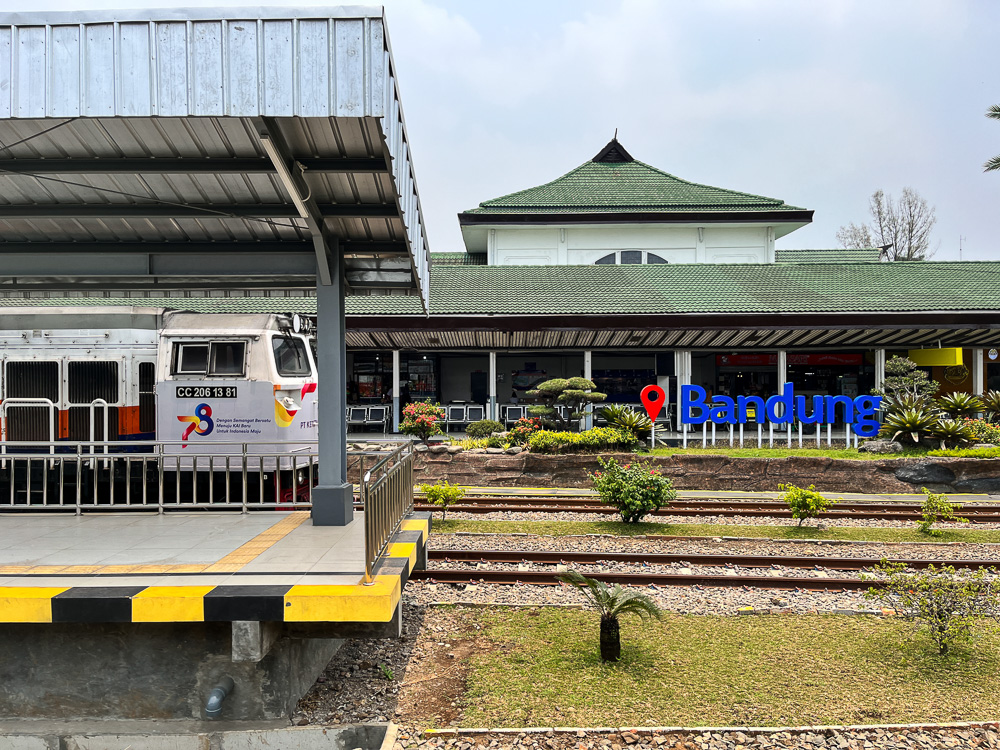
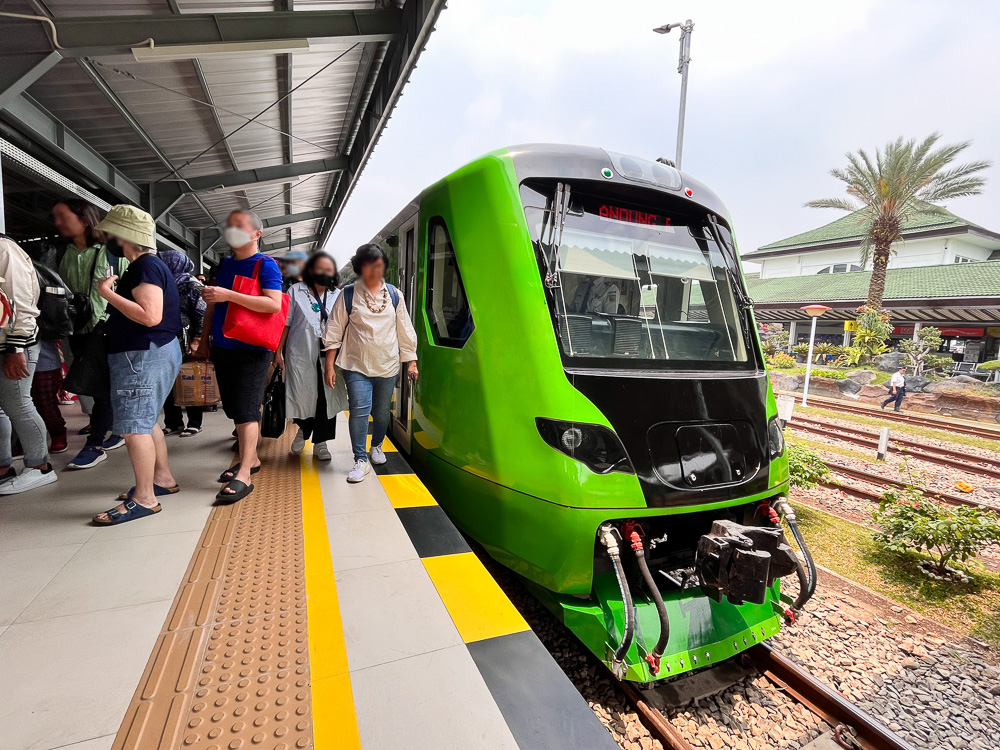
Once the doors were opened, passengers were then directed down the platform through a small gate on our side of the platform. This had the effect of creating a human traffic jam, as the full trainload of passengers attempt to squeeze through the gate and up the slow moving escalators to the station’s connecting bridge.
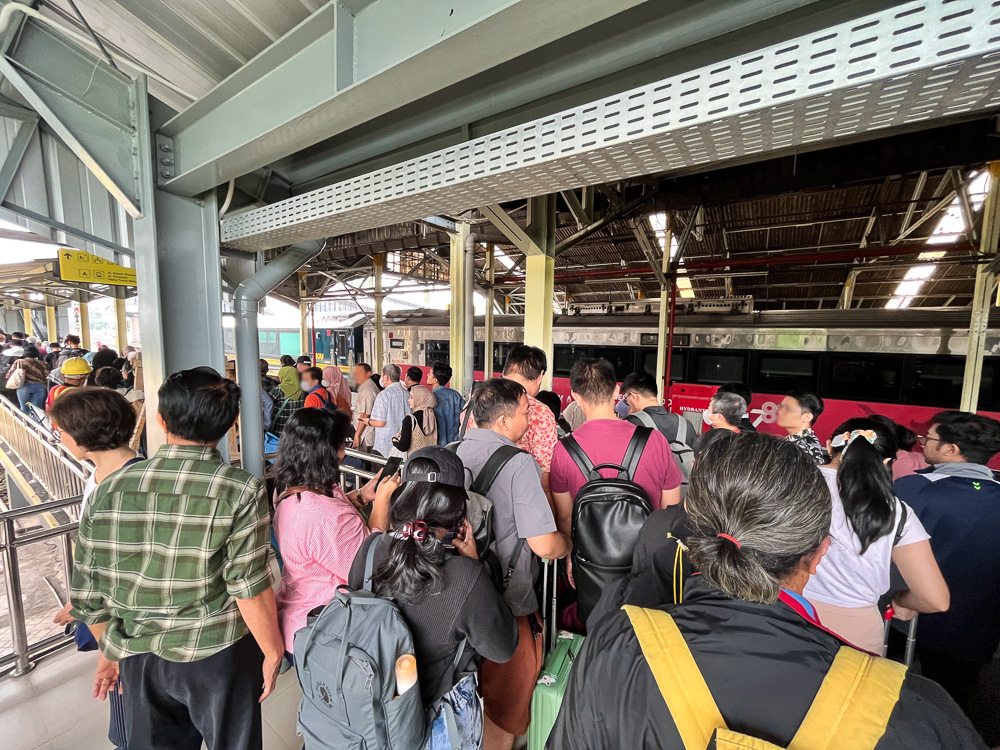
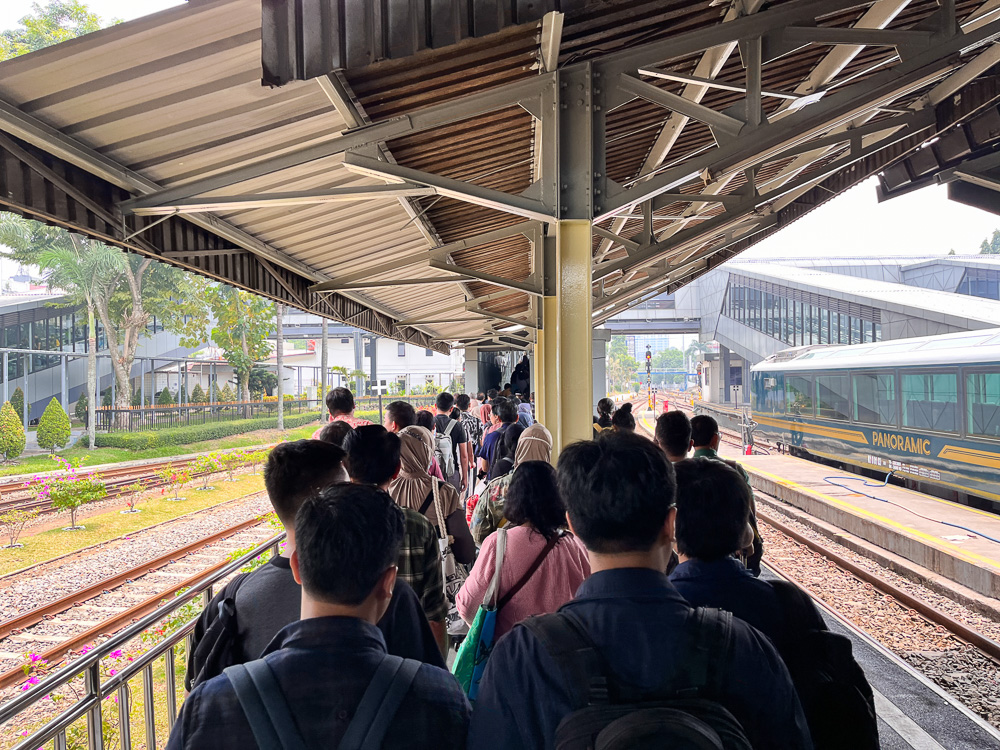
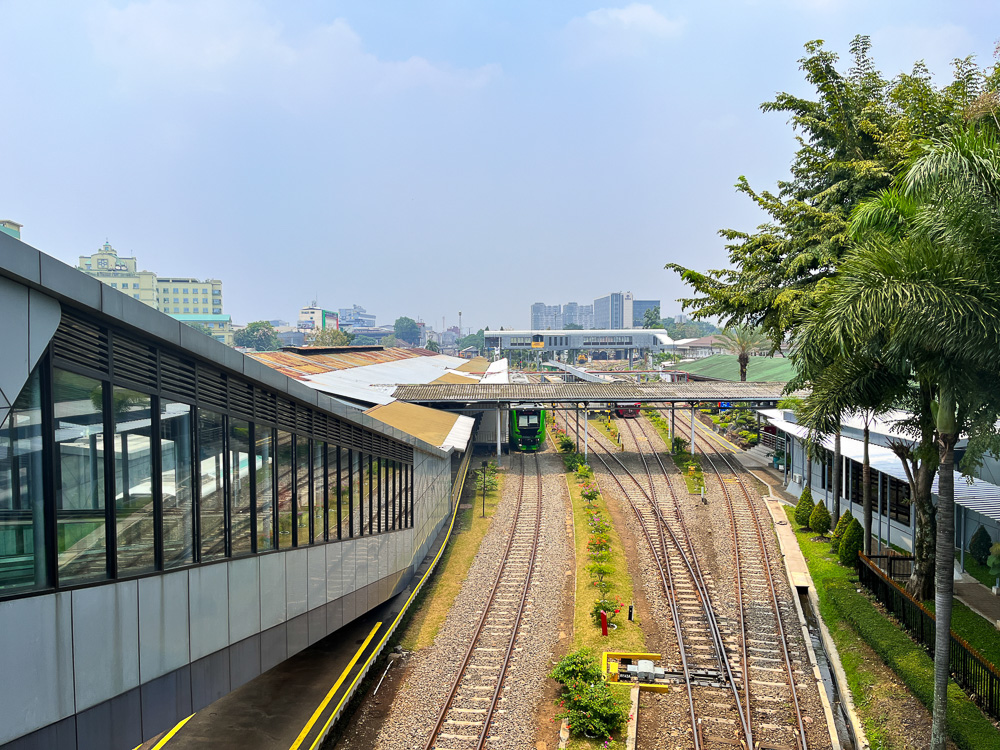
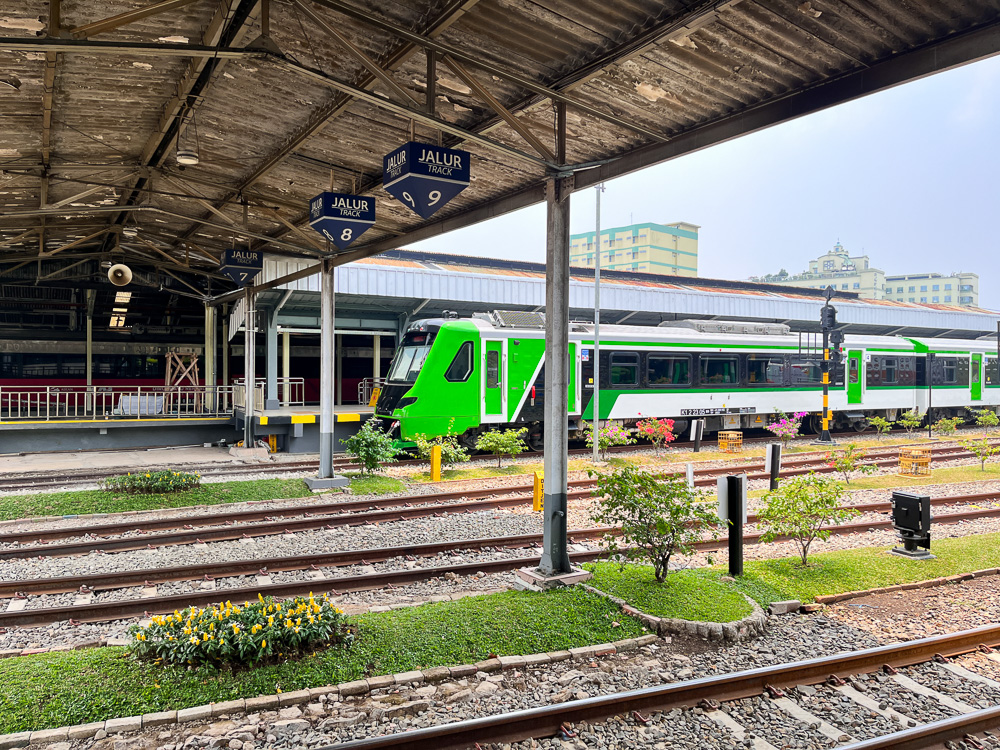
And that, is what WHOOSH passengers will experience when connecting onwards to Bandung via the feeder train.
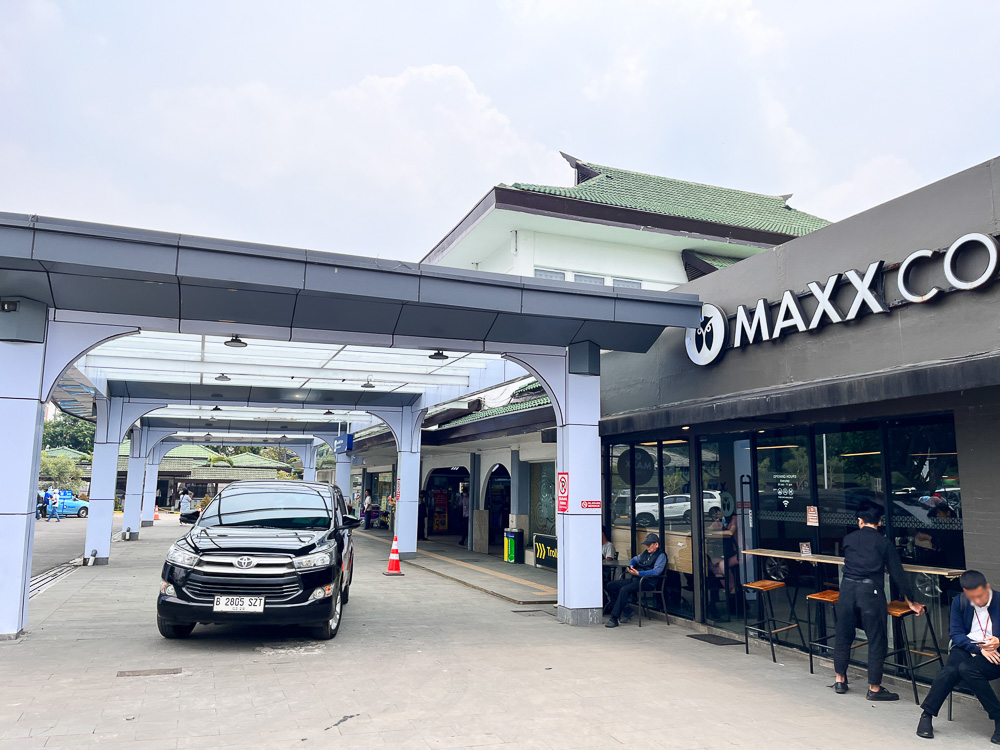
Final Thoughts
In my trip report on the WHOOSH, I mentioned that the Feeder train is the system’s weakest link. The reason is that I don’t think the Feeder is a viable solution in the long run especially when the trains have to cope with a WHOOSH-ful of passengers headed to or from Bandung. There is also the simple matter of optics – the passenger experience on the DMU is simply not on the same level as the WHOOSH.
A mitigating solution is to increase the length of the DMUs operating the route. But the best solution is, of course, building the HSR to Bandung proper in the first place. This may never be done, so consistent attention will have to be given to the Feeder trains to ensure more adaptive operations to cater for future passengers growth.
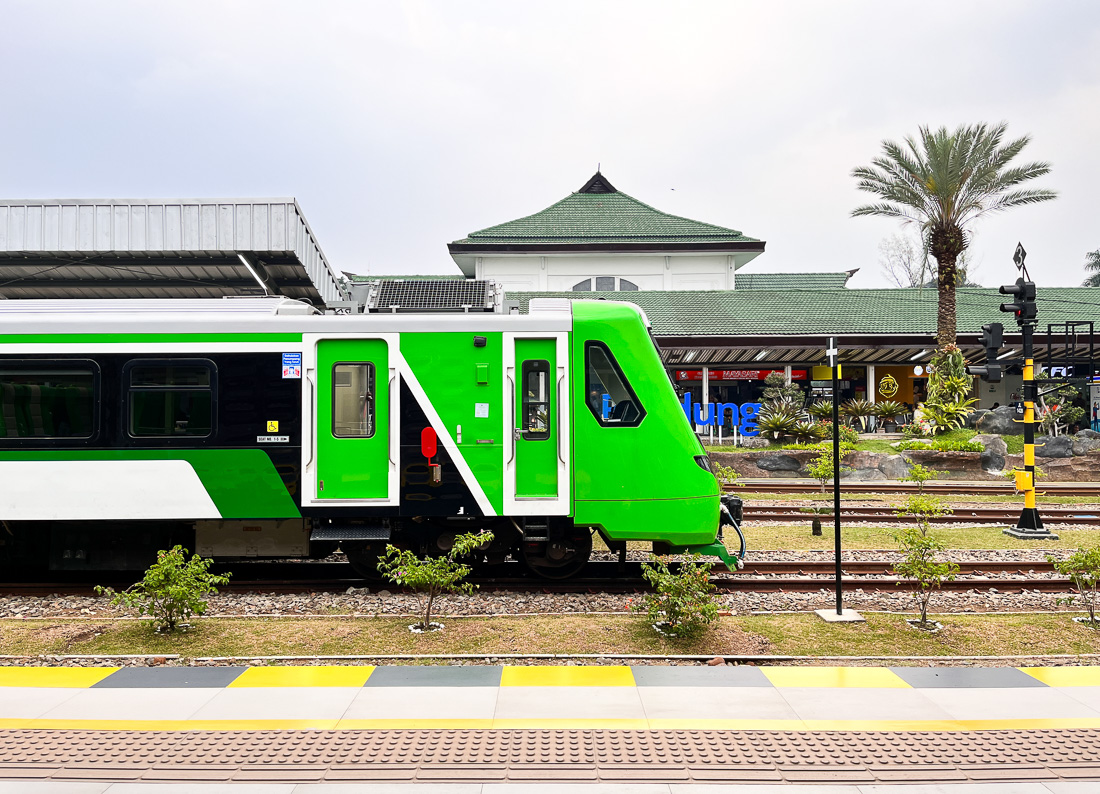
Comments
2 responses to “PT KAI: Jakarta – Bandung HSR Feeder train (Padalarang to Bandung)”
[…] me from Jakarta to Bandung in a total of 50 minutes, albeit with a transfer at Padalarang to a feeder service for the final leg to Bandung. Having had a taste of the high speed future, it only made sense that […]
[…] served by the Padalarang HSR station west of the city proper. Here, passengers have to connect to a dedicated feeder train service running on the existing mainline from the older Padalarang railway station to the actual Bandung […]